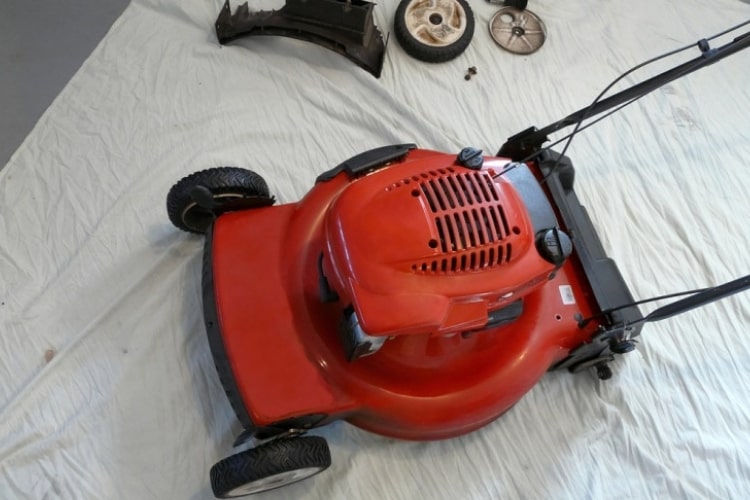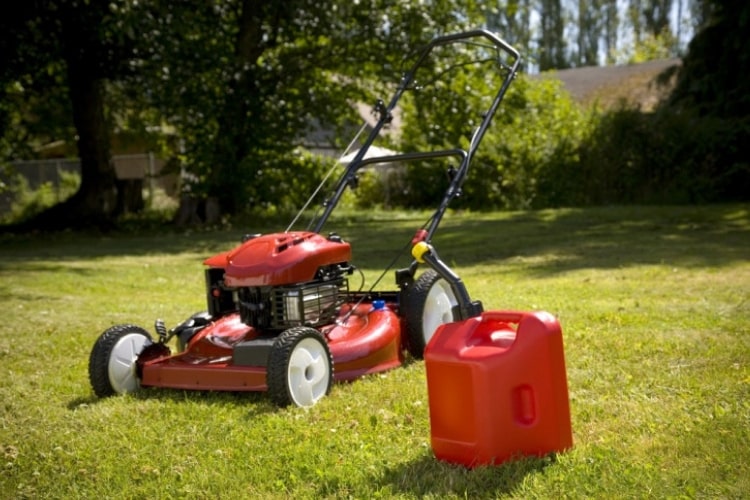My Lawnmower Won’t Start — Troubleshooting Guide
Don’t freak out if your lawnmower won’t start. And certainly don’t buy a new one before you know exactly what’s wrong. There might be something very simple going on — something that you can fix on your own.

We’ve put together a brief troubleshooting guide for lawnmowers that won’t start. Whether you use a traditional hand-pushed mower or a riding model, work through the list before even thinking about a replacement.
My Lawnmower Won’t Start After Winter
If you use a fuel-powered lawnmower, you may have trouble getting it started after a long and cold winter. The problem may be related to the spark plug. Or a blockage in the fuel line may be starving the engine of gasoline. If you run into problems getting your lawnmower ready for spring, try the following:
- Use fresh gas. Old gasoline can cause starting difficulties. Also, make sure there’s enough gas in the tank, and that the vent in the tank isn’t blocked.
- Check the spark plug. Make sure the spark lead is properly attached to the plug. If there’s noticeable damage or corrosion, replace the entire spark plug.
- Use the choke. If your lawnmower has a manual choke, turn it one.
- Prime the mower. If there’s a primer bulb, press it a few times. You’ll also need to prime your lawnmower if it ran out of fuel while running.
- Check the air filter. A dirty air filter can interfere with the combustion process. Clean or replace the filter to ensure air passes through the engine unhindered.
- Check the cables. Check all the cables for damage. Pay particular attention to the cable that connects the “dead man’s handle” to the engine.
- Check for water in the fuel tank.
- Clear the starter cord of blockages. If you have difficulty pulling the starter cord, check for blockages caused by soil, grass, and vegetation. Make sure you disconnect the spark lead before doing this.
- Check the carburetor. It should be clear of blockages and gummy accumulations. It should also be firmly bolted to the engine.
My Lawnmower Won’t Start After Running
If you lose power when you’re mowing the lawn, the effects of a long, cold winter may have caused issues with pumps, seals, and valves in the carburetor. These components in and around the engine can become clogged with a range of substances — starving the engine of either fuel or air.

If you’ve tried all the troubleshooting tips listed above, first try to raise the cutting height of your lawnmower. If that doesn’t work, check for a build-up of vegetation and damaged blades.
Old, degraded oil can lead to the seizure of your lawnmower’s engine unless you replace it as quickly as possible. Drain the old oil fully before adding the new. Ideally, this should be done once a year — just before the first lawnmowing job if the year.
My Lawnmower Starts Then Dies
Again, go through the steps listed above if your lawnmower starts then dies within seconds. This could be down to old fuel left in the tank over the winter. If you suspect this to be the case, don’t — under any circumstances, drain the fuel tank. Doing so can draw air into the engine, causing accumulations of gum and varnish. There’s also a chance that water may be drawn in at the same time, causing widespread damage.
Before you do anything else, try adding STA-BIL Fuel Stabilizer to your lawnmower’s fuel tank. This specially-formulated fuel additive stops gasoline from breaking down into its component parts. Run the engine for a few minutes before trying again. If degraded fuel is to blame, there’s a good chance the stabilizer will do the trick.
For the best results, add some fuel stabilizer to every fuel can — particularly during the final weeks of fall







After being serviced over the winter my mower did well for the first 3 cuts of the season. However, on the fourth cut the engine began to labor and then shut off. Even after letting it sit for some time it wouldn’t start up again. Along with your suggestions should I try and use a starter spray to the carburator?
Brand new mower used a few months, changed spark plug oil is fine and it won’t start.